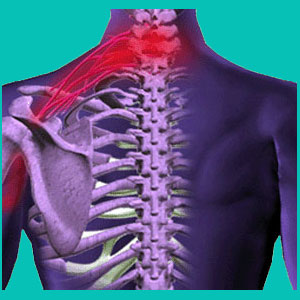
Herniated disc finger pain is often blamed on a bulging or ruptured intervertebral disc in the lower regions of the cervical spine. The intervertebral discs in the neck are small and herniate relatively easily and often. It is very common to have one or more bulging discs in the neck and not experience any pain whatsoever.
However, herniations are also the main diagnostic scapegoat used to explain neck pain, shoulder pain, arm pain and finger pain, as well as the related neurological symptoms of numbness, weakness and tingling which often accompany the agony. In some instances, the disc is the true causation of these troubles. In other cases, there might be other plausible explanations.
This essay helps patients to correlate cervical disc concerns with pain and neurological effects in the fingers.
Identification of Herniated Disc Finger Pain
Most finger pain conditions that are blamed on a herniated disc are thought to be created through the process of neuroforaminal stenosis. This is commonly referred to as a pinched nerve and may account for a plethora of symptoms in the area innervated by the compressed neurological structure. It is certainly possible that a particularly badly herniated disc can impinge on a spinal nerve root, or even the spinal cord itself, (called central spinal stenosis). However, these events are not nearly as common in reality as they are diagnosed.
The symptoms presented in the finger often do not exactly correlate with the diagnosed condition. The location of the pain might not match up to the affected nerve. Although some appropriately located symptoms might support the theory, some patients endure far too many and widespread pains to possibly be caused by the single herniation.
It is always recommended to seek expert nerve testing from a spinal neurologist, in order to definitively place blame on any cervical herniation or eliminate it as the suspected origin of finger pain.
Finger Symptoms from a Herniated Disc
Fingers, hands and wrists have a tendency of attracting a number of diagnoses which are often proven wrong, including herniated disc-related pains and a number of other chronic pain syndromes including carpal tunnel syndrome, tendonitis, tendonalgia, osteoarthritis, thoracic outlet syndrome and unspecified neuropathy. These conditions are often associated with work activities, such as playing a musical instrument, typing or doing difficult, precision work with the hands. While these circumstances can create symptoms in some patients, they are more often only diagnostic scapegoats, rather than actual sources of pain.
Patients with static and predictable pain patterns have a better chance of suffering from real structural pain conditions, while those with more variable patterns lean more towards ischemia, or some other nonstructural source process, as possible causes of symptoms. Of course, this is not a rule and there are exceptions on both sides of the equation.
Herniated Disc Finger Pain Experiences
If your finger pain, finger tingling, finger numbness or finger weakness has been blamed on a herniated disc in the neck, make sure to research the condition and diagnosis carefully. Compare your exact symptoms to what is clinically expected and look for discrepancies. Be especially vigilant to look out for too many symptoms in areas not affected by that particular disc. This occurrence is very common and a true sign of possible diagnostic error. Remember that misdiagnosed intervertebral conditions are the main reason for the horrific curative statistics offered by most disc treatment options. If the pain does indeed correlate, and the disc is definitely causing compression of neurological tissue, then targeted care should bring about complete resolution of the problem.
Nonsurgical spinal decompression is a great therapy option for these types of pain syndromes, but surgery should be considered only in cases where no other conservative treatment choice exists.
Herniated Disc > Herniated Disc Pain > Herniated Disc Finger Pain




